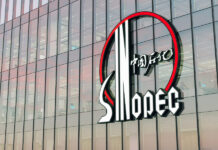There are many variable interest entity (VIE) enterprises in China. Many of them succeed in Series A financing but fail to close a Series B or Series C financing due to a number of reasons. On the other hand, these enterprises are invested by US dollar funds and are also pursued by domestic investors. For these enterprises, it is easier to achieve their financing goals with domestic institutional investors. Therefore, whether to remove the VIE structures is a vital strategic decision.

Hans Cai
安杰律师事务所
上海办公室合伙人
Partner
AnJie Law Firm
Shanghai
From as early as 2011, the author’s team has successful removed VIE structures for nearly 10 enterprises. Among these enterprises, a Suzhou-based medical information system company applied in 2014 to the China Securities Regulatory Commission (CSRC) for an initial public offering, and the application was subsequently accepted. This article briefly addresses the most frequently asked questions regarding the removal of VIE structures.
Q: What is the common practice for removing VIE structures?
A: We have developed four mainstream option plans during our practices.
Option 1: Using the domestic company under the VIE structure (normally jointly held by the founders and other PRC individuals, and referred to as “domestic company”) as the listing body. The Cayman company will redeem and cancel the preferred shares held by foreign investors. The wholly foreign-owned enterprise (WFOE) within the group is retained and restructured to become a subsidiary of the domestic company;
Option 2: The only difference to Option 1 is that the WFOE will no longer be reserved and then after subsequently liquidated;
Option 3: The domestic company is the listing body as well but the original foreign investor acquires the equities of the domestic company and transforms it into a Sino-foreign joint venture;
Option 4: The WFOE will be the listing body (transforming into a Sino-foreign joint venture), the original foreign investor continues to hold the shares in the Cayman company and becomes the indirect foreign investor of that Sino-foreign joint venture through the Hong Kong company. The founder exits his shares from the Cayman company and becomes the Chinese investor of that Sino-foreign joint venture.
Q: In what scenarios shall we adopt these options in removing VIE structures?
A: These two major factors will be usually considered in deciding which option to adopt in removing the VIE structures:
Licence and foreign qualified investor. Whether the “China value-added telecom service licence”, or the licence of “online data processing and transaction processing business (e-commerce business)”, “Internet Information Services (ICP business)”, “call centre operations”, “Internet access services” etc., is required for the company’s internet business. whether the licence of “Information and Video Distribution”, “Internet news services unit”, “Internet culture operation permit” or “Internet publishing permit” is required for these enterprises (which are all subject to prohibition of foreign investment); and whether there are foreign industry investors among the existing shareholders of the enterprise (referring to foreign internet or telecoms companies).
Only when an enterprise does not need the above licences, or when there are industry investors among the existing shareholders, given that the above licences are required, enterprises may consider options 3 or 4. Otherwise, options 1 and 2 are more acceptable.
Does the enterprise have sufficient money to allow foreign investors to exit? Can the foreign investors find the right domestic nominee shareholder? Foreign investors usually require rewards when exiting occurs. This can be quite a burden for many enterprises. If the enterprise is lucky enough to find domestic investment institutions to support the bridge funds or other funds to complete the exit of foreign investors, then option 1 is advisable.
If foreign investors can find the right nominee shareholder domestically, then they are in fact still holding the corresponding equities of the domestic company although they had exited from the Cayman company. In this case, option 2 is advisable.
If the company fails to find any RMB institutions to buy out the US funds’ shares and the foreign investor fails to find a nominee shareholder, foreign investors can only remain as shareholders. If the enterprise has reserved some money in its Cayman company account to allocate to investors (in the form of repurchase), foreign investors will be able to use the money to acquire the equities of the domestic company and transform it into a Sino-foreign enterprise. In this case, option 3 is advisable.
If the capital of the Cayman company is fully used, then foreign investors can only hold the shares and passively wait for the WFOE to become a Sino-foreign joint venture. In this case, option 4 is naturally adopted.
Q: What are the difficulties in removing the VIE structure? How long does it take to complete the process?
A: Removing a VIE structure is a systematic project. The projects we handled usually take around six months to one year. No matter which option is adopted, the following tasks are relatively difficult and particularly time consuming:
- Confirming the alternative arrangement of Cayman Employees’ Stock Option Plan (ESOP). Generally, it requires a limited partnership as the employee stock option platform of the domestic company replaces the ESOP;
- Filing and handling of tax return for foreign investors in exiting the Cayman company with a premium (involving the declaration under Circular 698 and Circular 7 filing in some cases);
- Filing and handling of tax return for the Hong Kong company in its sale of equity of the WFOE to the domestic company with a premium (for 10% withholding tax in most cases);
- Approving the change in nature of enterprise from a domestic company to a Sino-foreign venture by the Department of Commerce;
- Communicating with the administrators in cancelling the original ICP licence, and the subsequent application for the foreign-invested joint venture ICP (JV-ICP) licence;
- Cancelling the completed SAFE No. 37 registration of the founders by the foreign exchange department;
- Filing and handling of personal income tax return for the founder in transferring his or her equity of the domestic company to other shareholders; and
- Liquidating the WFOE and offshore special purpose company.
The founders should have some understanding of the VIE structure removal process before making a decision. Also, removing a VIE structure involves tax issues. We recommend that the founders seek advice from tax specialists to estimate the costs of the removal process.
Hans Cai is partner at AnJie Law Firm’s Shanghai office
北京市朝阳区东方东路19号院5号楼
亮马桥外交办公大楼D1座19层
邮编: 100600
19/F Tower D1, Liangmaqiao Diplomatic Office Building,
19 Dongfang East Road
Chaoyang District, Beijing 100600 China
电话 Tel: +86 10 8567 5988
传真 Fax: +86 10 8567 5999
电子信箱 E-mail:
caihang@anjielaw.com
www.anjielaw.com






















